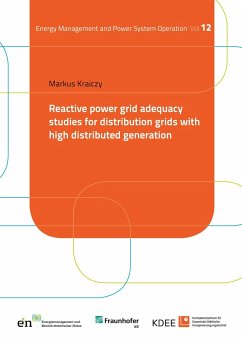Nowadays distributed energy resources (DER) can provide certain reactive power flexibility for voltage support in alternating current power systems. Besides local voltage support at the distribution level, the DER can also provide reactive power flexibility at the transmission-distribution (T-D) interface, which can improve the reactive power grid adequacy of the distribution level. The term reactive power grid adequacy describes the compliance level of a distribution grid with a predefined reactive power range at the T-D interface. However, a challenge in grid planning procedures is the consideration of the usually intermittent reactive power flexibility potential by the DER. This study aims to develop practicable grid planning procedures for advanced reactive power management at the T-D interface bymaking use of controllable reactive power sources at the distribution level, like DER and distributed reactive power compensators. The study is performed for a real German distribution grid section with very high-distributed generation.
Bitte wählen Sie Ihr Anliegen aus.
Rechnungen
Retourenschein anfordern
Bestellstatus
Storno








